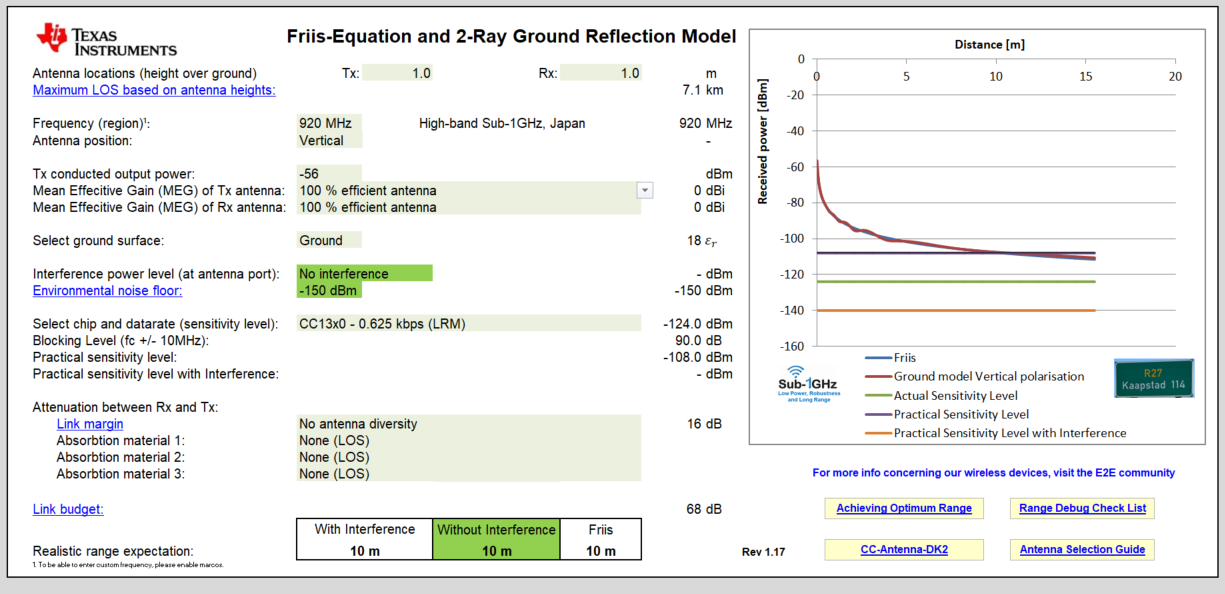Other Parts Discussed in Thread: , CC1350, LAUNCHXL-CC1350, CC1350STK
Hello,
we are currently researching whether it would be possible to design a PCB (e.g. based on the many TIDA examples provided by Texas Instruments) with an external attenuator to force the output power down to -62 dBm, which if I am not mistaken should correspond to a field strength of 35uV/m (measured at 3 m). Our target frequency-band is the japanese ISM 920MHz band.
The reason behind this is the Japanese law. It states that every radiating device between 322 MHz and 10GHz shall be exempt from the need for a licence and regulation if it's radiated power is at (or below) 35uV/m (measured at 3m).
Experiments with the LAUNCHXL-CC1310 have shown that even the lowest possible setting of -10dBm would still be around 82uV/m (at 3M) which would violate the law. But if the output power could be lowered with an external attenuation circuit - without making the RX-part completely useless of course - that would make our day. (Certifying a device in Japan for "bijaku denpa" is much easier and cheaper than any other alternative.)
Now, we do not have much expertise about RF circuitry to be able answer this question so the hopes are some specialist at TI or in the community would be able to.
Additional info about the device.
- The PCB would be close to the recommended specification (e.g. a LAUNCHXL-CC1310 or similar)
- Our PCB should be small, but we rather make a bigger PCB if by doing so we can get TX/RX functionality withing 35uV/m
- The maximal distance for the packets to travel would be in average 10m (max 15m but 10m is fine) with (usually) no obstructions in between (other than a spontaneously appearing human)
- Indoor application within an public building
- Packet size and datarate are smallest possible as the device is to send brief sensor alerts only (complying to ARIB-
- Transmission only on sensor event (very infrequent)
- Requires ACK-packet from the receiver or else the sensor will re-transmit
- We already have working devices from an old series which is way too powerful.
- A PCB-trace antenna is what we wanted for the new design... But, if the requirement for 35uV/m demands a different type of antenna (ceramic SMT or external whip or dipole etc.) or even two, then so be it.
- If additional components for splitting the RX and TX paths (for separate amplification and attenuation) are required, so be it.
Would it be possible to retro-fit a ready bought off-the shelf LAUNCHXL-CC1310 with an attenuated antenna to make the above work?
Also, we have the old CC1310-modules with an SMA-antenna connector on them. Connecting two modules with a two very short RF-cable with an attenuator in between should make it possible to "simulate" on-air right? What attenuation strength would be required if the lowest settings in both CC1310 were selected?
Looking forward to hearing from you.
Best Regards





